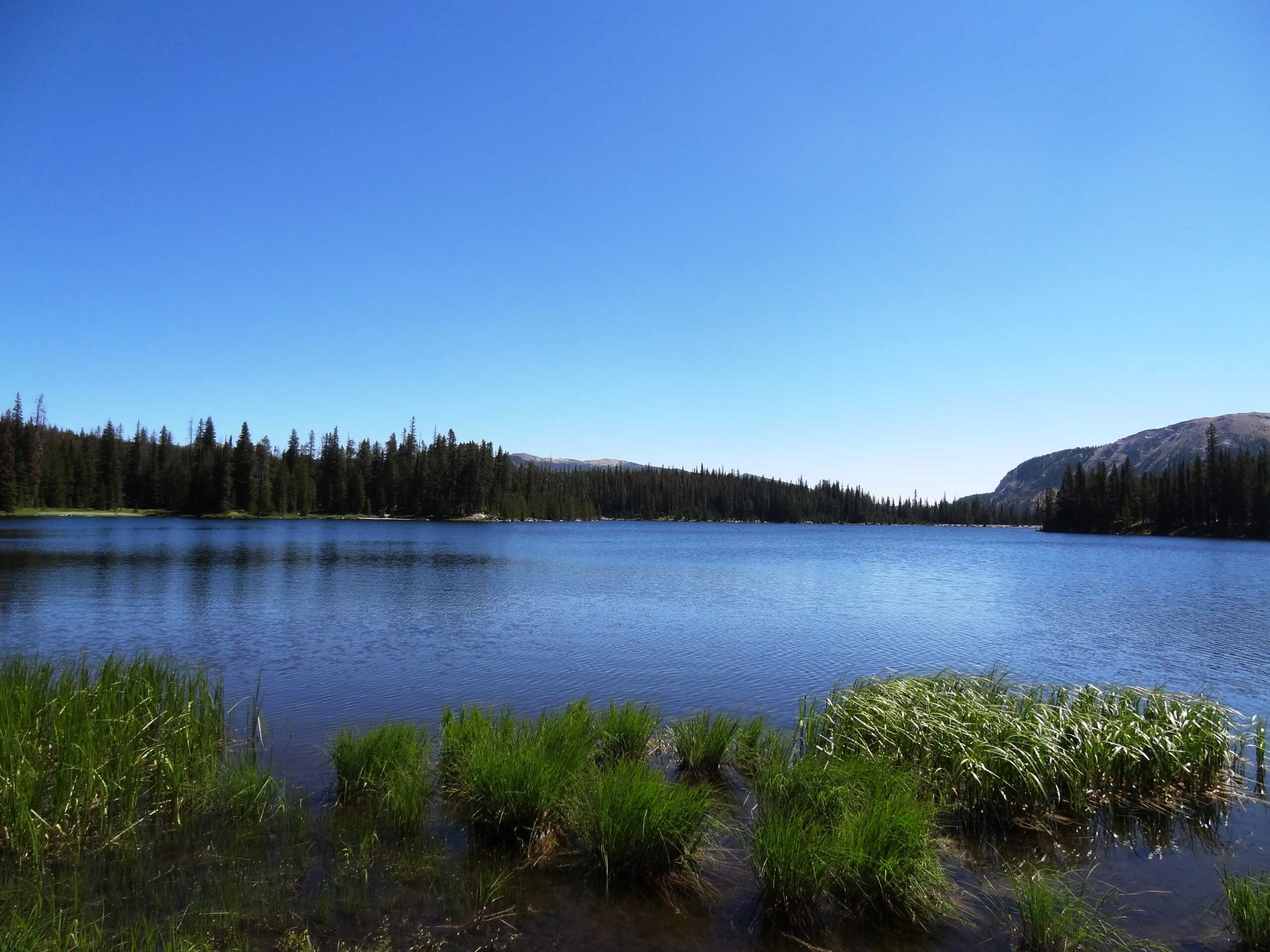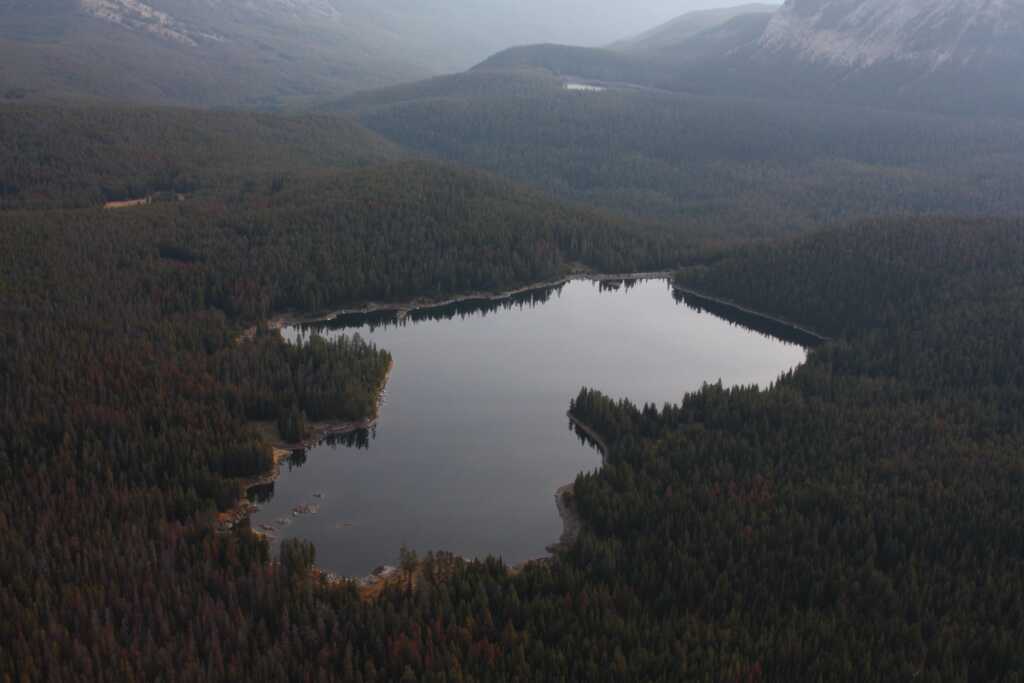Racetrack Creek Finally Has Chance to Connect to Clark Fork River
July 25, 2022

by Andrew Gorder
“The plaintiffs are owners of lands requiring irrigation, which could be served by Racetrack Creek, were the waters of the stream sufficiently copious. […]. Conceiving that an ample supply of water might be obtained if the surplus flood and waste waters of the stream were impounded and stored, the plaintiffs at various times have constructed dams at the outlets of various lakes and by means of the reservoirs thus created have stored water which they have sought to use.”
—Excerpt from the Montana Supreme Court’s 1926 opinion in Donich v. Johnson
Racetrack Lake Water Rights

After ten years of negotiation, Racetrack Creek finally has a chance to run from its high alpine headwaters all the way to the Upper Clark Fork River, even through the hottest months of the summer. With a water management plan that satisfies irrigation needs and instream flow protection for native fish, this decade-long project sets an important precedent for what’s possible when we cooperate on restoring streams in our watershed.
Located high in the Flint Creek Range southwest of Deer Lodge, Racetrack Lake forms the headwaters of Racetrack Creek. One of the largest tributaries of the Upper Clark Fork River, Racetrack Creek has supplied water for farming, ranching and other beneficial uses in the Deer Lodge Valley for over a century. Racetrack Creek also provides important habitat for numerous fish species—such as native cutthroat trout—and its clean, cold, waters historically recharged the mainstem of the Upper Clark Fork. But due to competition for limited water supply, the lower reaches of the Racetrack Creek go completely dry virtually every year.
For as long as anyone can remember, every year in the late summer months the creek has been cut off from the Clark Fork, blocking upstream movement for fish seeking cooler headwaters habitat, harming ecological function, and leaving fish stranded in pools that gradually dry up.
A History of Heavy Use

Like most key tributary streams in Montana, the natural supplies on Racetrack Creek were fully appropriated—or “spoken for”—by irrigators well before the 20th century. In other words, irrigation demands had outpaced supply. There simply was not enough water to allow all irrigators to irrigate for the full season. To provide more water for their lands, in the late 1800s, a few enterprising irrigators labored to construct a dam at the outlet of Racetrack Lake to raise the natural water level and capture snowmelt and runoff that otherwise would have been lost during spring runoff. These “lake users” would then release the stored water into the natural channel of the creek where it would flow down to the valley to be diverted into ditches and onto fields.
Competition for water on Racetrack Creek has always been fierce. As a result, the creek is no stranger to controversies that often end up in court. In the early 1900s, users with water rights predating the existence of the dam challenged the lake users’ practice of damming and storing surplus waters in Racetrack Lake. According to these users, they had already claimed all available water in Racetrack Creek, so by holding back spring flood waters for later use, the lake users were actually injuring the rights of these other users. The case eventually landed in the Montana Supreme Court, which ruled in favor of the lake users. The court found that preserving water supplies that would otherwise go to waste for beneficial uses is “of very high public importance” to the State of Montana.
A New Idea
In 2012, almost 90 years after the rights to stored water in Racetrack Lake were upheld by Montana’s high court, the Clark Fork Coalition posed a new, controversial question. Could those stored water rights be put to instream use to restore flows to the dewatered section of Racetrack Creek and (hopefully) reconnect the tributary to the mainstem? Restoring flows and ecological function in Racetrack Creek wasn’t just a goal for CFC. Montana Fish Wildlife and Parks (FWP) and the Montana Natural Resource Damage Program (NRDP) also considered restoring flows on the creek a high priority. Thanks in large part to funding provided by the NRDP, CFC purchased a water right equal to two-thirds of the stored water in Racetrack Lake from a willing landowner. However, getting approval from the state Department of Natural Resources and Conservation (DNRC) to use the water for instream flow would involve nearly a decade of bureaucratic and legal wrangling that has far surpassed any of CFC’s other restoration projects.
CFC first applied to change the use of the water from irrigation to instream flow in 2012. After it became clear that the DNRC would deny the application, CFC withdrew and opted to resubmit. Years of back-and-forth with the agency took place before the DNRC issued its initial decision in 2017. According to the decision, CFC would only be able to protect the lake water release during summer low flows for the top 17 miles of Racetrack Creek, but only to the point on the stream where previous water right holders diverted the lake water to use for irrigation. In other words, CFC could use the water to restore flows, just not within the dewatered reach.
After CFC challenged this nonsensical decision, a reviewing DNRC hearings examiner ended up reversing some, but not all, of the agency’s initial findings. CFC then asked the Montana Water Court to review the DNRC’s decision. In April 2019, the Water Court ruled in CFC’s favor, reversing the DNRC decision and ordering the agency to grant CFC’s request. In a strongly worded opinion, the Water Court took DNRC to task for abusing its authority under water right change laws and failing to properly give effect to the purpose of the instream flow statutes—namely to put water back into dewatered streams.
Following the Water Court’s decision, CFC’s change application went out for public notice. While many irrigators had questions about the potential impact of this change on their use of the water in the creek, through lengthy negotiations and a final DNRC order, those questions have now been settled. On May 3, 2022, the DNRC issued its Final Order granting our change as proposed, finding that the change to instream use would not adversely affect other water users.
A Collaborative Plan
It’s been a long time coming, and we’re excited to finally see how this release can benefit late-season flows on Racetrack. Like many over appropriated streams, the Racetrack system is complex, and ensuring that both water users and wildlife have the water they need can be a challenge. But it’s a challenge that can be overcome. During the 2022 irrigation season, for the first time on Racetrack Creek, a collaborative water management plan is in place between CFC and irrigators. This plan makes it possible for the creek to meet both ecological and agricultural needs. Best of all, we expect that this vitally important tributary now has a much better chance of staying connected to the mainstem Clark Fork during a critical time of need for the fishery.
We also recognize that this project could not have happened without the funding and support of the Montana Natural Resource Damage Program and the Columbia Basin Water Transactions Program. This is a unique instream flow change in western Montana, and, in our view, sets an important precedent for what’s possible when we work together to restore flows on dewatered streams in our watershed.
